10 Gorgeous Succulent Centerpiece Ideas + How to Create One
I absolutely love shopping online for succulents and gardening supplies. If you aren't already saving money by comparing prices online, give it a try! Here are six of my favorite things that I have purchased online as I build my own succulent oasis:
There is nothing more eye-catching than a centerpiece decorated with tiny succulents. When I first started decorating my home with succulents, I noticed my motivation, interest in greenery, and overall mood increase all at once. These gorgeous plants light up any space they touch, and that includes the table!
When it comes to brightening up your kitchen or coffee table, I love a succulent centerpiece full of different colors, shapes, and textures. There are so many different ways to combine succulents, planters, and other décor to create a perfect succulent arrangement for every occasion.
Instead of being jealous of the next one you cross paths with, let’s have a look at how to easily put together a DIY live succulent centerpiece. I’ll also share 10 stunning ideas to draw inspiration from.
Supplies Needed to Create a Succulent Centerpiece
If you’re planning a homemade succulent centerpiece, you’ve got options galore. As you’ll see below in the inspiration section, you could literally make 10 arrangements without any of them looking alike.
There are a few items that you’ll always need, regardless of what your intended end product will look like. The rest is up to you: work with different decorative sands or pebbles to cover visible soil, or plant the succulents tightly enough that no soil is actually visible (stuffing any gaps with decorative moss).
Make a hybrid candle holder/succulent arrangement or one that can hold a small flower bouquet in the middle. Combine your succulents with air plants. Include faux flowers for an extra pop of color. The possibilities are endless!
Here’s what you need to get started:
The basics (we’ll discuss them in more detail below):
- Planter with a drainage hole
- Your succulents of choice
- Succulent soil (or elements to mix your own)
- Fine pebbles (optional)
- Small piece of mesh
Here are some ideas for additional material to use as finishing touches:
The extras:
- Decorative sand or pebbles
- Faux flowers
- Decorative (Spanish) moss
- Candle & holder
- Air plants
- Seasonal pieces (Christmas baubles, Easter bunnies, Halloween skulls, etc.)
Choosing Your Succulents
When choosing which succulents to include in your centerpiece, it all depends on what you like and which species have similar requirements. Some succulents need different care than others, so it’s a good idea to look up individual types’ requirements to make sure they match.
For a basic arrangement, you’ll want two or three different types:
- Rosette succulents (like Echeveria, Aeonium, Graptopetalum, Pachyphytum, Haworthia) as a base.
- Trailing succulents (like Curio rowleyanus, Sedum ‘Burrito’, Crassula marnierana) to cover gaps and spill out of the planter.
- Optional: Taller succulents (like Crassula ovata, Sansevieria, Portulacaria afra, Euphorbia tirucalli) to place in the back and add variety.
Don’t forget, you can also add cacti, or even make a cactus-only arrangement if that’s more your style. Most species of cacti have similar watering needs to succulents, meaning they can be combined just fine. Just wear gloves to handle the prickly species.
If you’re having trouble deciding which plants to use, your best bet is to take a look around our succulent database to see which species and cultivars attract you (there are so many, with loads of different colors!). Alternatively, a fun option is just to let yourself be surprised and go for a succulent mystery pack, that you can buy online.
Did you know?
If your succulent arrangement will not be receiving full sun and you don’t want to use a grow light, you may want to consider going for some of the lower-light species. These include the genera Haworthia, Sansevieria (now renamed Dracaena), Gasteria, Aloe, and Gasteraloe.
Related: Fuzzy Succulent Types
Choosing Your Container
Pretty much anything can make a container for a succulent arrangement. My personal favorite option is to upcycle old containers, baskets, jars, and more; but there are also loads of store-bought options.
A few perfect containers that you could upcycle yourself or find at your local Goodwill include:
- Fruit bowls
- Picnic baskets
- Teapots or old-school kettles
- Teacups or coffee mugs
- Old suitcases
- Colanders
- Watering cans
- Pieces of tree trunk or driftwood
There is one thing I want to mention: many planters and containers, including the options I’ve mentioned above, don’t come with a drainage hole. As you probably know if you’re familiar with succulent care, this puts your succulents at risk of overwatering and root rot.
If you’re into succulents and houseplants, getting a drill with masonry and metal bits is a total life-changer. Suddenly, everything is a potential planter. I wouldn’t be able to live without my cordless DEWALT drill!
Mixing Your Soil
Because succulents love good drainage, it’s important to use a light and airy soil mixture. This prevents the soil from choking the roots, and also from staying wet long enough to cause root issues. Luckily, it’s not difficult to obtain a suitable soil mixture.
You can buy succulent and cactus soil online or in plant shops and garden centers; but those mixes can be a bit pricey. Plus, they often seem very dense and don’t always contain quite enough gritty material to let the excess water drain freely. That’s why I usually mix my own succulent soil, which is not nearly as complicated as it sounds.
Here’s what you’ll need:
- 3 parts high-quality houseplant potting soil
- 2 parts coarse sand
- 1 part perlite
Mix these three ingredients together and you’ve got the perfect soil base for almost all types of succulents and cacti. If you tend to be heavy-handed when it comes to watering and worry you’ll still manage to drown your plants, you can always add an extra handful or two of fine orchid bark for even better drainage.
10 Easy Steps to Create a Succulent Centerpiece
Once you’ve made up your mind on how you want your succulent centerpiece to look, and you’ve managed to gather all your supplies, putting the whole thing together is a breeze. I’ve personally found that the planning takes more time than the actual execution!
Although your method may vary a bit depending on the arrangement you’ve envisioned, here are some basic steps:
Step 1: Choose a planter for your succulent centerpiece.
Step 2: Drill one to three drainage holes in the bottom of your planter if it doesn’t already have one. Please wear goggles and follow the safety instructions that come with your drill.
Step 3: Place a mesh pad or piece of mesh over the drainage hole to contain soil spills and prevent messes.
Step 4: Fill the bottom of the planter with a layer of pebbles*.
Step 5: Fill the planter ⅔ of the way with the soil mixture you prepared.
Step 6: Take the succulents from their nursery planters and carefully remove the soil around their roots.
Step 7: Place the plants in the container using your preferred arrangement.
Step 8: Pack additional soil around each succulent, covering its roots.
Step 9: Add any garnishments and a top dressing if you want, like decorative sand or pebbles.
Step 10: Gently blow on the succulents or use a paintbrush to remove spilled soil from their leaves.
Now your succulent centerpiece is ready to impress during your next dinner party or gathering!
*Many succulent enthusiasts swear by this to improve drainage, but its actual efficacy is disputed. Since it has no downsides, I usually still do it, just in case.
Related: Ways to Get More Succulents for Free
10 Beautiful Succulent Centerpiece Ideas
There’s nothing more comforting than the perfect succulent centerpiece in the midst of the dinner table. But sometimes coming up with the right idea or arrangement is hard to do.
With the right inspiration, your succulent centerpiece can enhance the beauty of your dining room. Take a look at these succulent centerpiece ideas and use them to create a tiny oasis in the midst of the hustle and bustle of family life.
1. Pedestal Pot Succulent Centerpiece
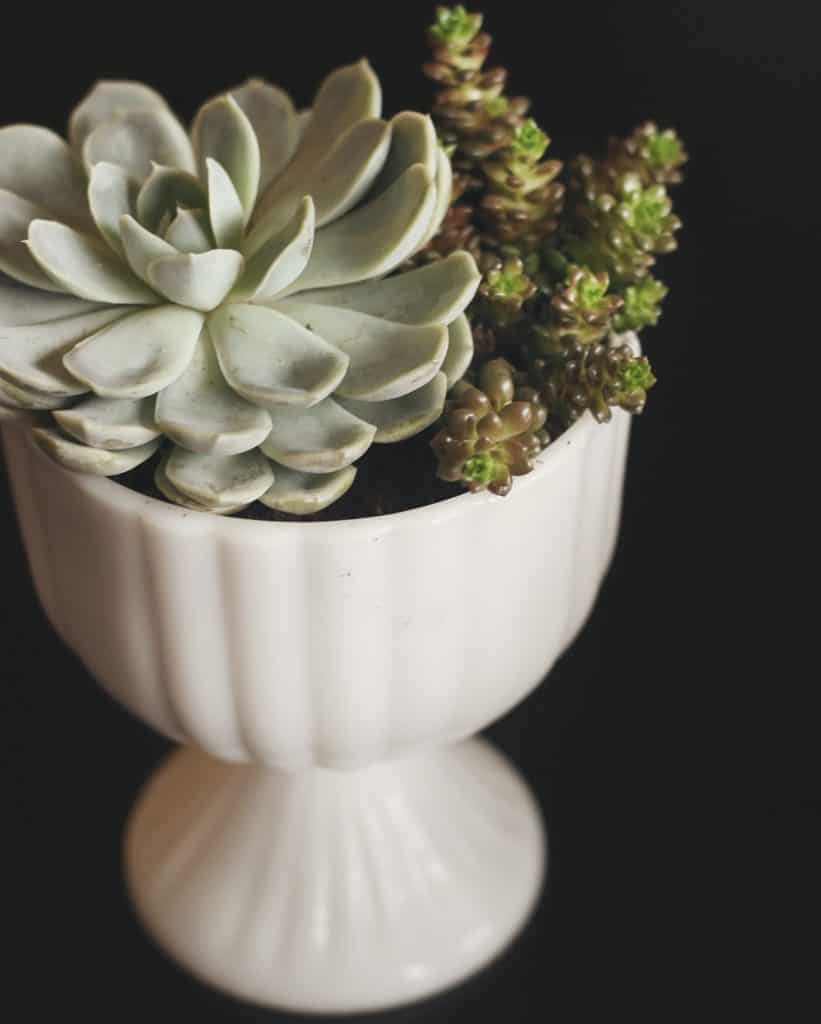
Succulents look great in pedestal planters, especially if you’ve got some trailing varieties to work with. Allow them to spill over the edges for a stylish look.
Two of these pedestal planters filled with succulents and placed on either side of the front door would make for quite the entrance to your home!
2. Natural Wood Succulent Centerpiece
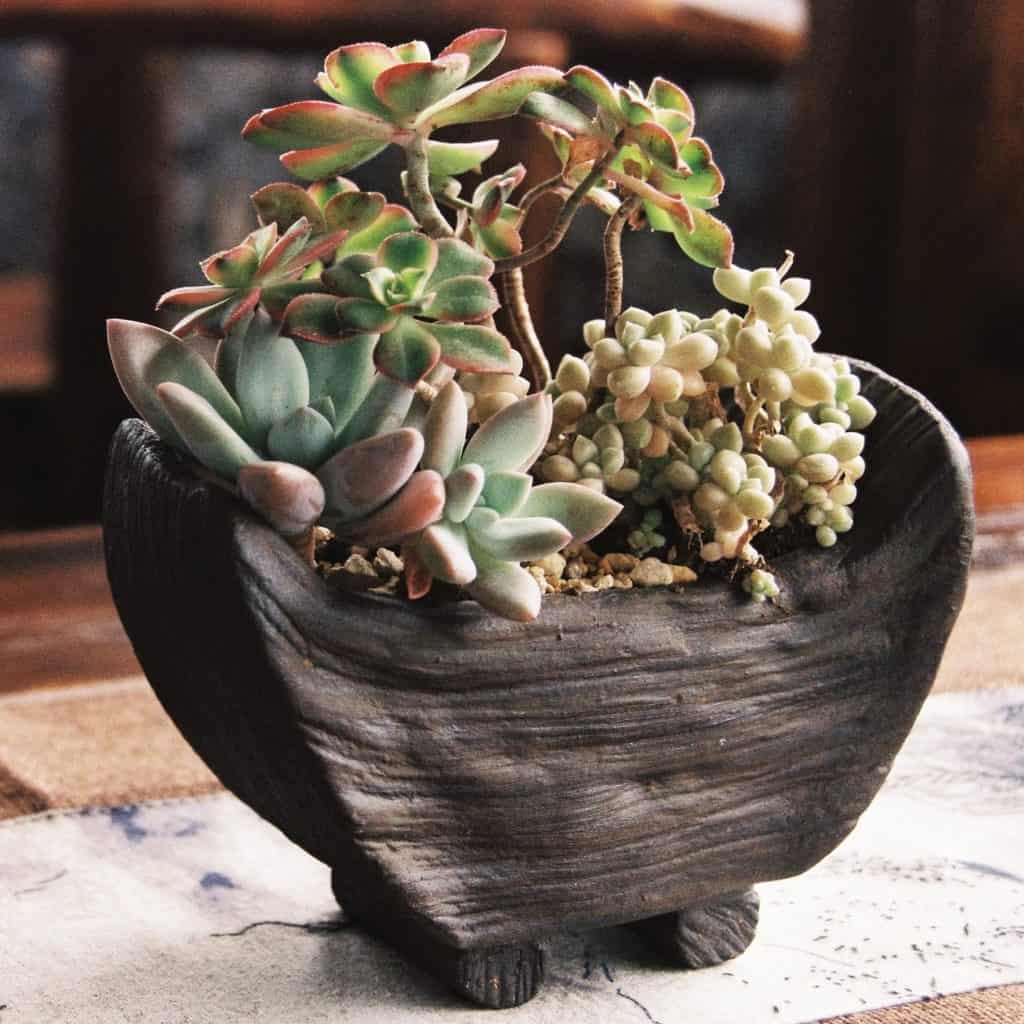
I love the idea of growing succulents in real (drift)wood for a natural centerpiece! You could use a circular piece of hollowed-out tree trunk or go for driftwood pieces with a hollow center.
If you don’t want to DIY, it shouldn’t be too hard to find a pre-made driftwood planter that you love.
3. Succulent “Bouquet” Centerpiece
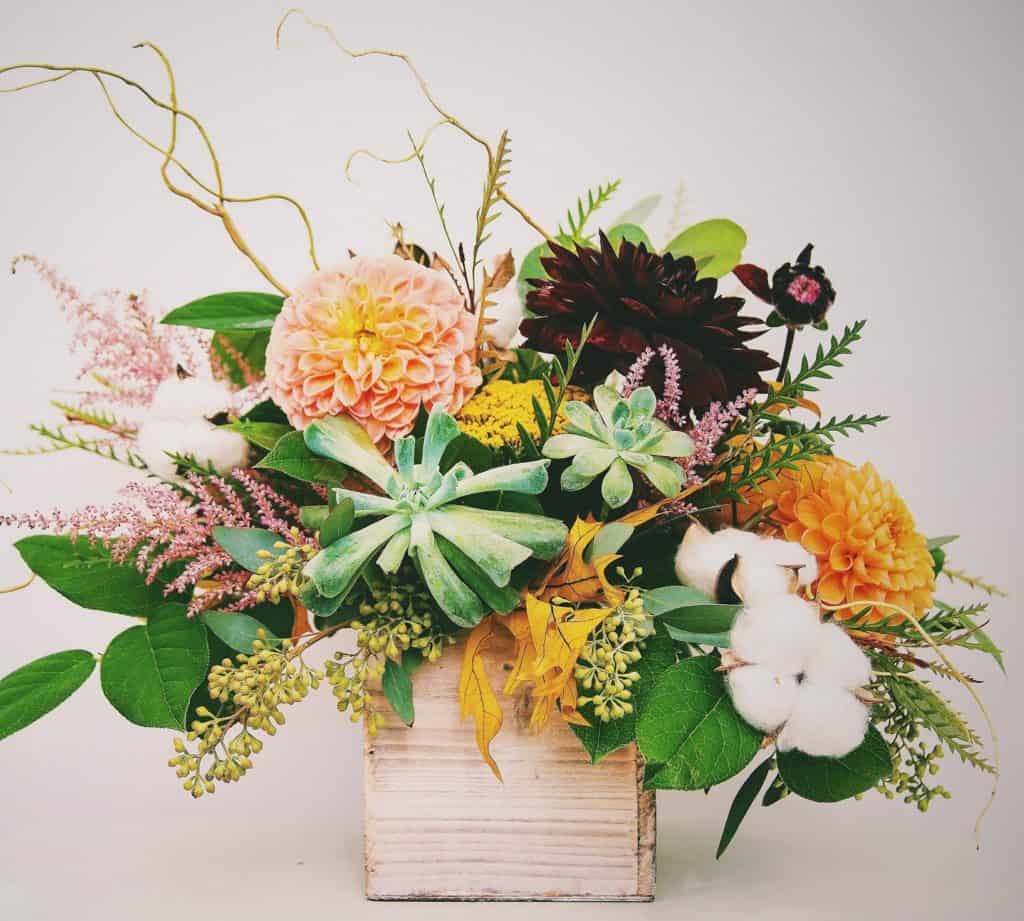
For a while now, flower bouquets that include rosette succulents like Echeveria have been popular for weddings and similar special occasions. I love the look, but not the fact that these succulents are not planted and would die if you left them like that!
To imitate the succulent bouquet look but still be able to enjoy it on a more permanent basis, combine beautiful rosette succulents in a relatively tall planter. Add some faux flowers of your choice and embellish the centerpiece to your liking.
4. Succulent Candle Centerpiece
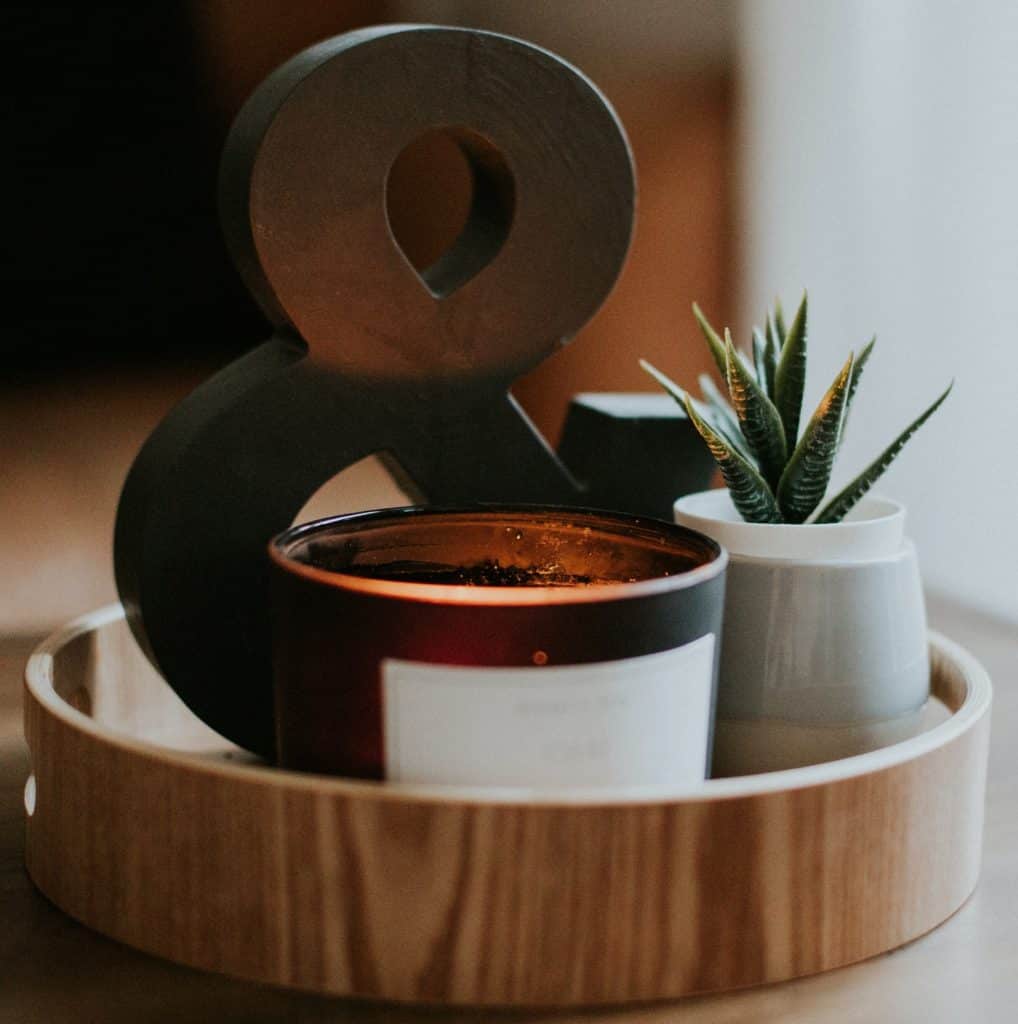
As long as the flame will be far enough away from the plants to prevent damaging or overheating them, you can absolutely combine succulents and candles.
An easy way to make a succulent and candle centerpiece is by taking a wide, shallow bowl and placing a candle holder in the middle. Add the soil and place succulents in a separate planter; then arrange them in the bowl. Add any additional decor to tie it in with your personal style.
Related: DIY Succulent Floating Candle Vase with Water Beads
5. Simple Bowl Succulent Centerpiece
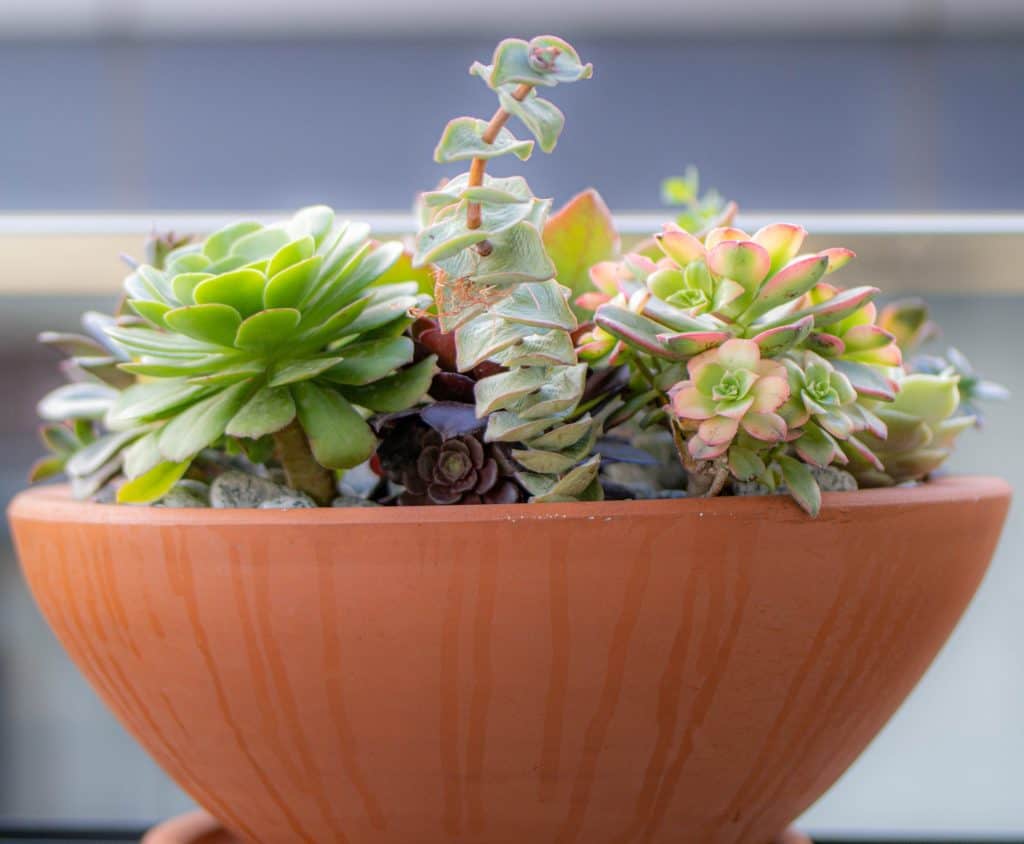
Sometimes you just want to keep things simple and let the plants do all the talking. Find a nice bowl or shallow planter that suits your home décor and fill it up with the most colorful succulents you can find! This is the perfect way to display the most beautiful species that don’t need any bells and whistles.
6. Beachy Succulent Centerpiece
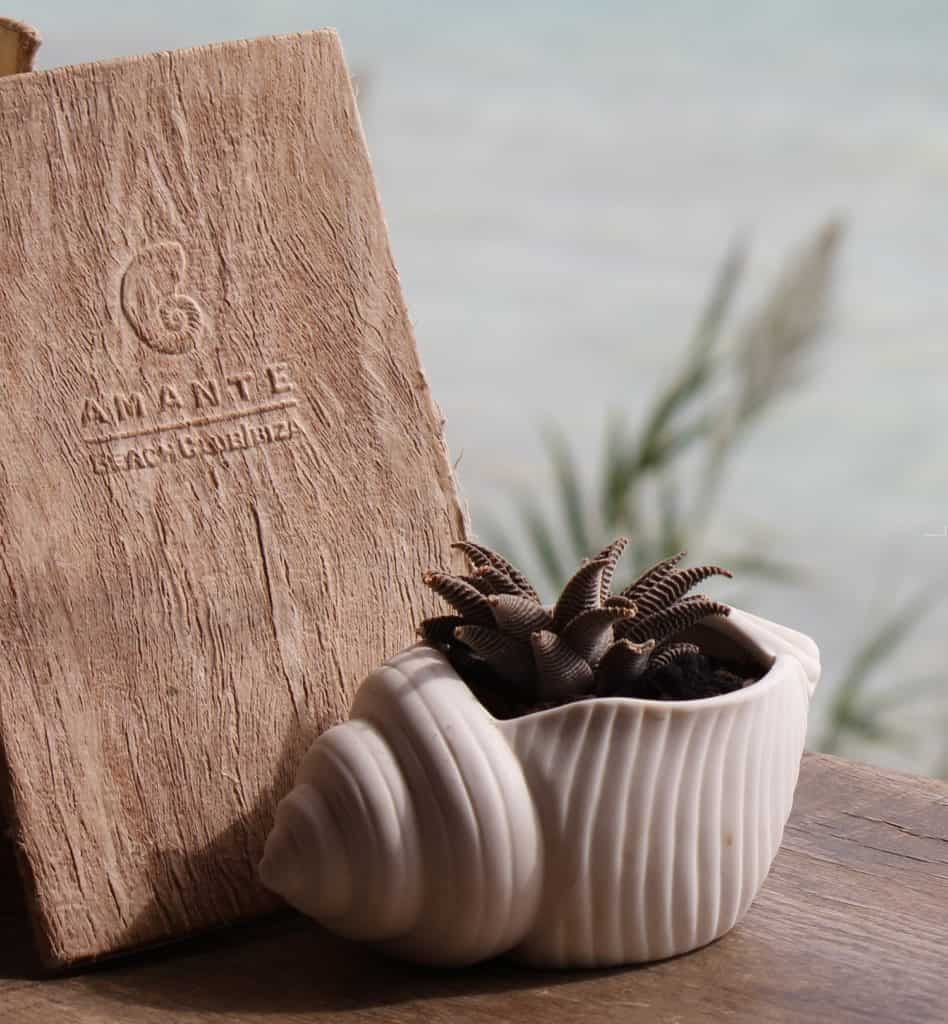
How cute are succulents planted in a beachy conch planter? Top the potting soil with some white decorative sand for an airy look, and don’t forget to include some driftwood pieces or sea glass as well. You could even use the arrangement to display some of your favorite seashells that you’ve collected during visits to the beach!
7. Easter Basket Succulent Centerpiece
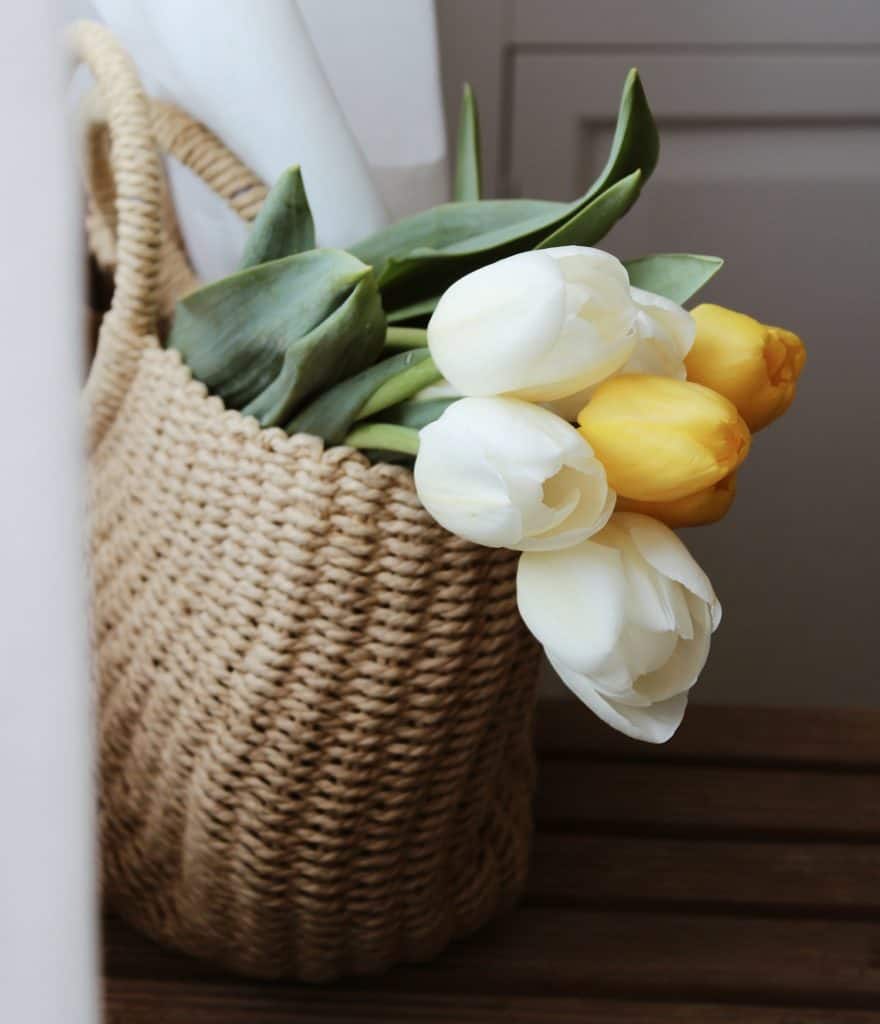
Surround this centerpiece with flowering tulip and daffodil bulbs for a beautiful Easter table.
For a cute Spring or Easter-themed succulent centerpiece, go for a wicker basket as a planter and use some green florists’ moss between the plants to simulate grass. You can even hide some faux eggs in there, or go for an egg-like succulent like Pachyphytum oviferum.
8. Halloween Succulent Centerpiece
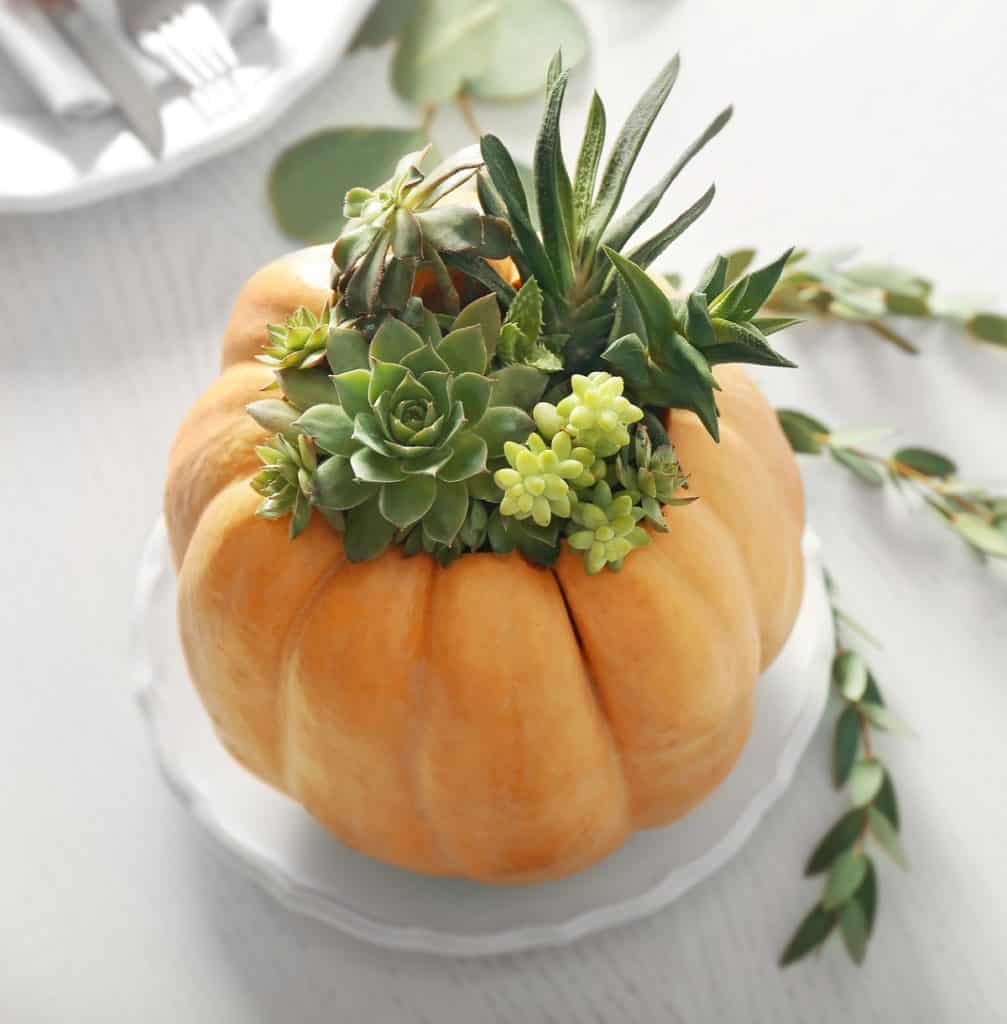
I told you there’s a succulent centerpiece for every occasion! Plant different succulents in a pumpkin planter, surrounded by some mini skull decorations, for a nice Halloween arrangement.
To make things extra spooky, you could use black and orange species like Echeveria ‘Black Prince’, Aeonium ‘Zwartkop’, Euphorbia ‘Sticks on Fire’, and similar varieties.
9. Succulent Terrarium Centerpiece
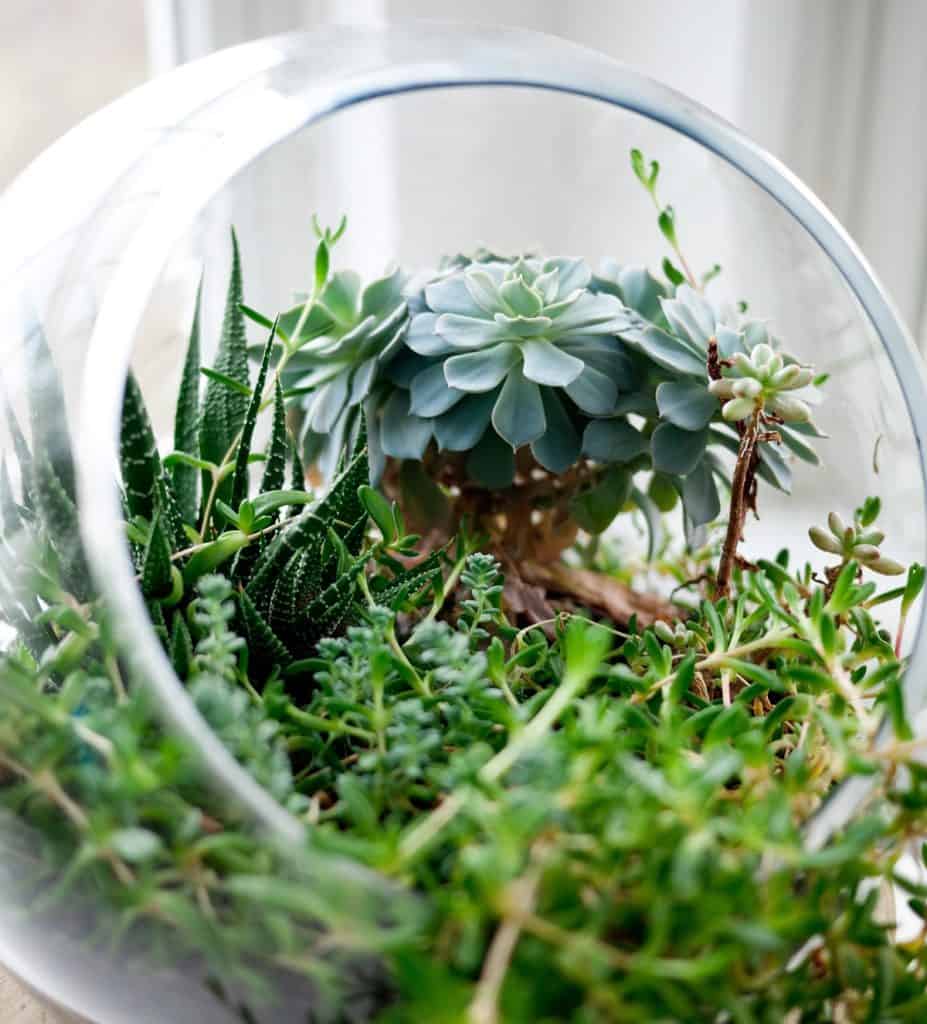
Many succulent lovers have mixed feelings about succulent terrariums, and I’m no exception. I adore the look – truly one of the most beautiful ways to display succulents – but I, unfortunately, don’t adore how difficult they are to maintain.
Succulents are by definition not really terrarium plants, since they like things on the drier side and a terrarium holds moisture in. They usually don’t have drainage and don’t offer enough air circulation.
If you still want to make a succulent terrarium centerpiece, keep in mind that it may be temporary. If the plants do start to suffer, you’ll have to take them out. Use an open terrarium, and if you can find one with drainage, that’s ideal.
Related: How to Make a Living Succulent Ornament
10. Succulent and Air Plant Centerpiece
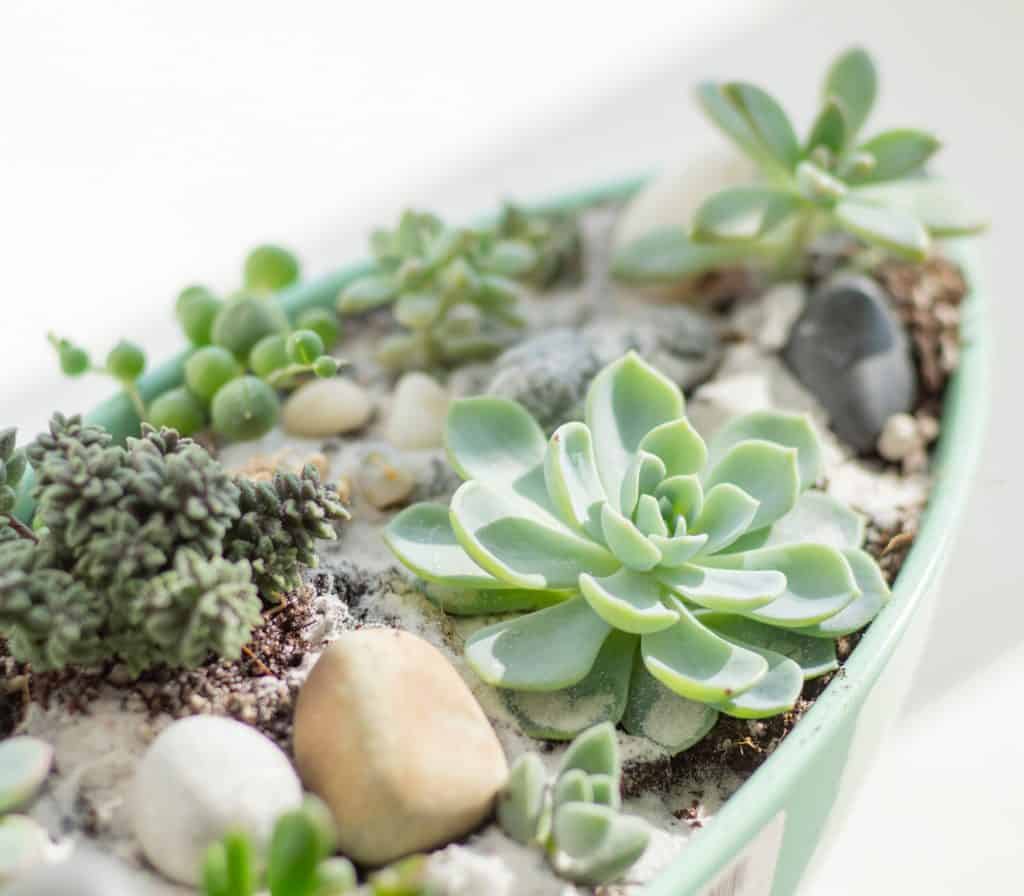
Succulents and air plants (genus Tillandsia) go together like peanut butter and jelly. They have different watering needs, with the air plants wanting to be sprayed or dunked in water regularly, but that’s no problem!
Air plants don’t need to be planted in the soil, just perched in the centerpiece, which means you can easily take them out to give them a drink and then put them back.
Related: Things to Include in a DIY Valentine’s Day Succulent Basket
How to Care for Your Succulent Centerpiece (So That It Lasts!)
Your beautiful new succulent centerpiece won’t last long if you don’t provide proper care. That’s the downside of these beautiful natural decorations. Luckily, keeping the succulents in your arrangement alive and getting them to actually grow is not too much of a challenge.
For all the basics you need to know about caring for succulents, I’d like to invite you to have a look at the full post on indoor succulent care. However, there is one topic, in particular, I’d like to stress here… and that’s lighting.
Unless the spot where you’d like to display your succulent centerpiece receives direct sunlight, the arrangement may only be able to live there for part of the time. Most succulents are desert plants that need a lot of light and will start to stretch and lose their charm if you keep them in a location that’s too dark. This means you need to either keep the centerpiece in a sunny spot and move it whenever you’d like to display it, or you could consider running a grow light to make sure it can photosynthesize properly.
While succulent arrangements can be beautiful, just keep in mind how important it is to give your plants what they really need to thrive. That way you can keep on enjoying your centerpiece for a long time to come!
